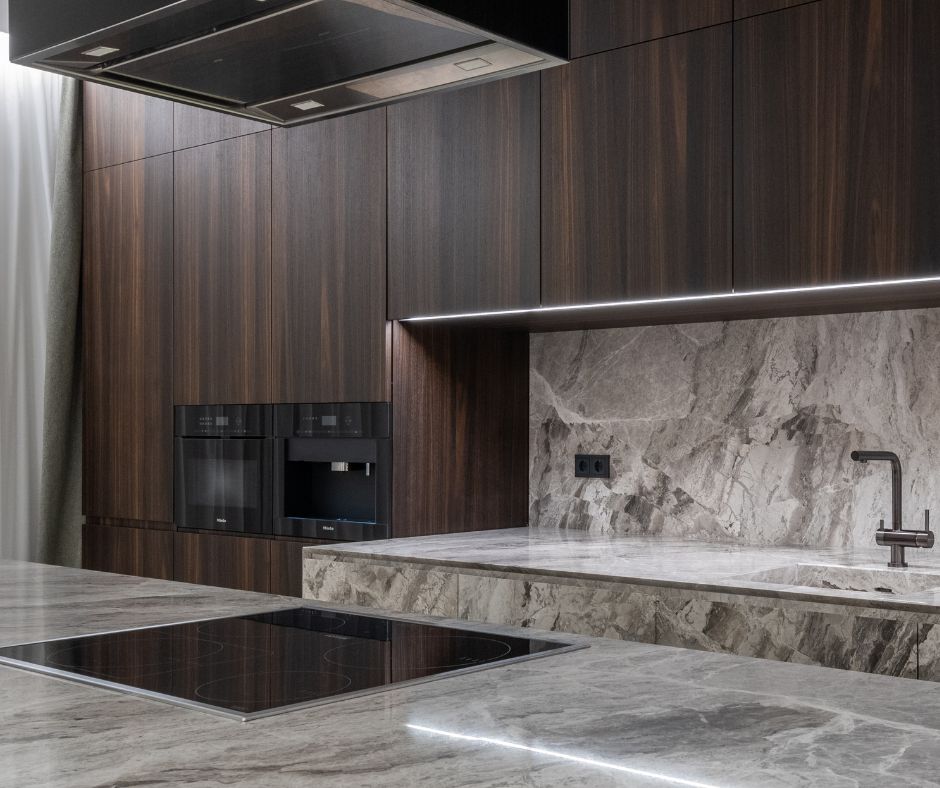Innovative kitchens are leading the way in redefining culinary traditions and experiences. Although induction cooking technology might seem like a contemporary breakthrough, its origins date back to the early 20th century. The intriguing demonstrations of the 1930s captivated audiences as they showcased the remarkable ability to heat water using magnetic energy without any visible heat source. However, it is only in the past few decades that advancements in technology, efficiency, and design have allowed induction cooktops to firmly secure their role in the realm of modern kitchens.
Today, an increasing number of home cooks and culinary enthusiasts are adopting induction cooking for its striking combination of sleek aesthetics, exceptional precision, and unmatched energy efficiency. This groundbreaking cooking method transforms meal preparation by integrating the science of heat management with culinary creativity, enabling the creation of exquisite dishes on its elegant and smooth surface. A well-chosen induction cooktop can compete with the speed of a microwave, allowing for delicious family meals to be prepared in record time!
Maximizing Flavor and Nutritional Value with Precision Cooking Techniques
Unlike traditional gas or electric ranges, induction cooktops generate heat directly within the cookware through the innovative use of electromagnetic energy. This advanced method eliminates wasted heat, prevents burnt edges, and provides unparalleled control over both low and high temperatures. With such precise heat management, your ingredients can retain their natural moisture, flavor, and nutritional integrity. Whether you are flash-searing proteins, gently simmering sauces, or quickly blanching vegetables, induction cooking allows for effortless achievement of flawless results, steering clear of overcooked dishes and nutrient loss.
Stylish Induction Cooktops: Maximizing Space and Minimizing Stress
In kitchens where every square inch is valuable, induction cooktops excel not only in performance but also in their visual appeal. Their flat, smooth surfaces integrate seamlessly into your countertop, presenting a minimalist aesthetic that creates additional space for food preparation, plating, or even enjoying casual dining experiences.
In contrast to conventional gas hobs, which typically feature bulky grates and protruding burners, induction cooktops sit flush with the countertop. While ceramic stovetops may offer a more refined look, they often remain dangerously hot long after cooking ends, posing a safety risk.
On the other hand, induction surfaces cool down rapidly once the cookware is removed. The heat is generated through the magnetic interaction between the cooktop and the cookware, rather than by the cooktop itself, resulting in the glass surface retaining significantly less heat. This feature not only makes cleaning safer and simpler but also creates a safer cooking environment, particularly beneficial for households with children or pets who may be curious about kitchen counters.
The outcome? A cooler kitchen with cleaner lines and greater flexibility—ideal for contemporary cooks who prioritize both aesthetics and functionality.

Thorough Guide to Selecting the Ideal Cookware for Induction Cooking
Transitioning to induction cooking may come with the bittersweet realization that you might need to part with some cherished old pans. Since induction technology relies on magnetic energy for heat production, not all pots and pans are compatible with this cooking method.
For cookware to operate effectively on an induction cooktop, it must be made from ferrous (magnetic) metals, such as cast iron, carbon steel, or magnetic-grade stainless steel. A simple fridge magnet test can help you determine compatibility: place a magnet on the bottom of the pan, and if it adheres firmly, you are ready for induction cooking.
When selecting new cookware, choose pans with a sturdy, flat base. This design ensures optimal contact with the cooktop, allowing for even heat distribution, which is crucial for achieving perfect browning, tender roasts, and crispy edges. Additionally, high-quality induction cookware is designed to resist warping over time, ensuring consistent cooking performance for every meal.
While it may be difficult to part with your old favorites, view this as an upgrade. In return, you will gain enhanced control, faster cooking times, and dishes that boast even richer flavors and textures.
Induction Cookware Must-Have Checklist: Essential Items for Cooking Success
 Conduct a fridge magnet test—strong adhesion indicates induction compatibility
Conduct a fridge magnet test—strong adhesion indicates induction compatibility Prefer flat-bottom pans for optimal contact and heat distribution
Prefer flat-bottom pans for optimal contact and heat distribution Select cast iron, carbon steel, or magnetic stainless steel cookware
Select cast iron, carbon steel, or magnetic stainless steel cookware Avoid cookware made solely from copper, aluminum, or glass unless explicitly marked for induction
Avoid cookware made solely from copper, aluminum, or glass unless explicitly marked for induction Look for the induction symbol (which resembles a horizontal coil or a series of loops) stamped on the base or packaging
Look for the induction symbol (which resembles a horizontal coil or a series of loops) stamped on the base or packaging
Pro Tip: The induction symbol typically resembles a zigzag or spring coil graphic, and spotting it guarantees cookware compatibility.
Key Installation Factors for Your Induction Cooktop
Before you begin your culinary adventure with your new cooktop, several installation essentials must be prioritized:
-
Professional Installation is Essential: Induction units often require dedicated electrical circuits and specific clearances. It is crucial to engage professionals who are knowledgeable about these requirements.
-
Hire a Licensed Electrician: Wiring a high-powered induction cooktop is not a DIY project.
Discover why hiring a qualified electrician is crucial. -
Confirm Your Power Setup: Some induction models need substantial power. Before making a purchase, verify that your wiring meets the specifications required by the cooktop.
Proper installation ensures not only optimal performance but also guarantees safety and longevity.
Vital Insights on the Advantages of Induction Cooking
Induction cooking offers more than just speed and safety; it is inherently intelligent. With the right cookware and a professionally installed system, you can prepare meals that boast better taste, richer textures, and healthier options, time after time. In today’s modern kitchens, precision cooking is not just a luxury; it has become the standard expectation.
Common Questions About Induction Cooktops Answered
1. What Advantages Do Induction Cooktops Have Over Gas or Electric Alternatives?
Induction cooktops offer instant heat control, improved energy efficiency, and enhanced safety features. Since they heat the cookware directly, meals cook more quickly with less energy waste, while the surfaces remain cooler, thus significantly reducing the risk of burns.
2. Can I Continue Using My Existing Pots and Pans on an Induction Cooktop?
Only if they are magnetic. Cookware made from cast iron or magnetic stainless steel is ideal. You can quickly check compatibility by placing a magnet on the base; if it sticks firmly, it is suitable for induction use.
3. Does Induction Cooking Impact the Flavor of Food?
Yes, and in a highly favorable way. Because induction cooking allows for precise temperature control, you can sear, sauté, or simmer without overheating, thus preserving the natural flavors, textures, and nutrients much more effectively than with inconsistent gas or electric heat sources.
4. Is Specialized Wiring Necessary for an Induction Cooktop?
Most induction cooktops require a dedicated electrical circuit and specific voltage and amperage configurations. It is essential to have a professional electrician evaluate and install your wiring to ensure compliance with safety regulations and to guarantee optimal performance.
The post The Secret Ingredient in Modern Kitchens: Induction Cooktops Are Changing the Game appeared first on https://cookinggods.com
The Article Induction Cooktops: The Game-Changer in Modern Kitchens Was Found On https://limitsofstrategy.com
The Article Induction Cooktops: Revolutionising Contemporary Cooking Spaces First Appeared ON
: https://ad4sc.com

